Tibet: A Glossary of Repression
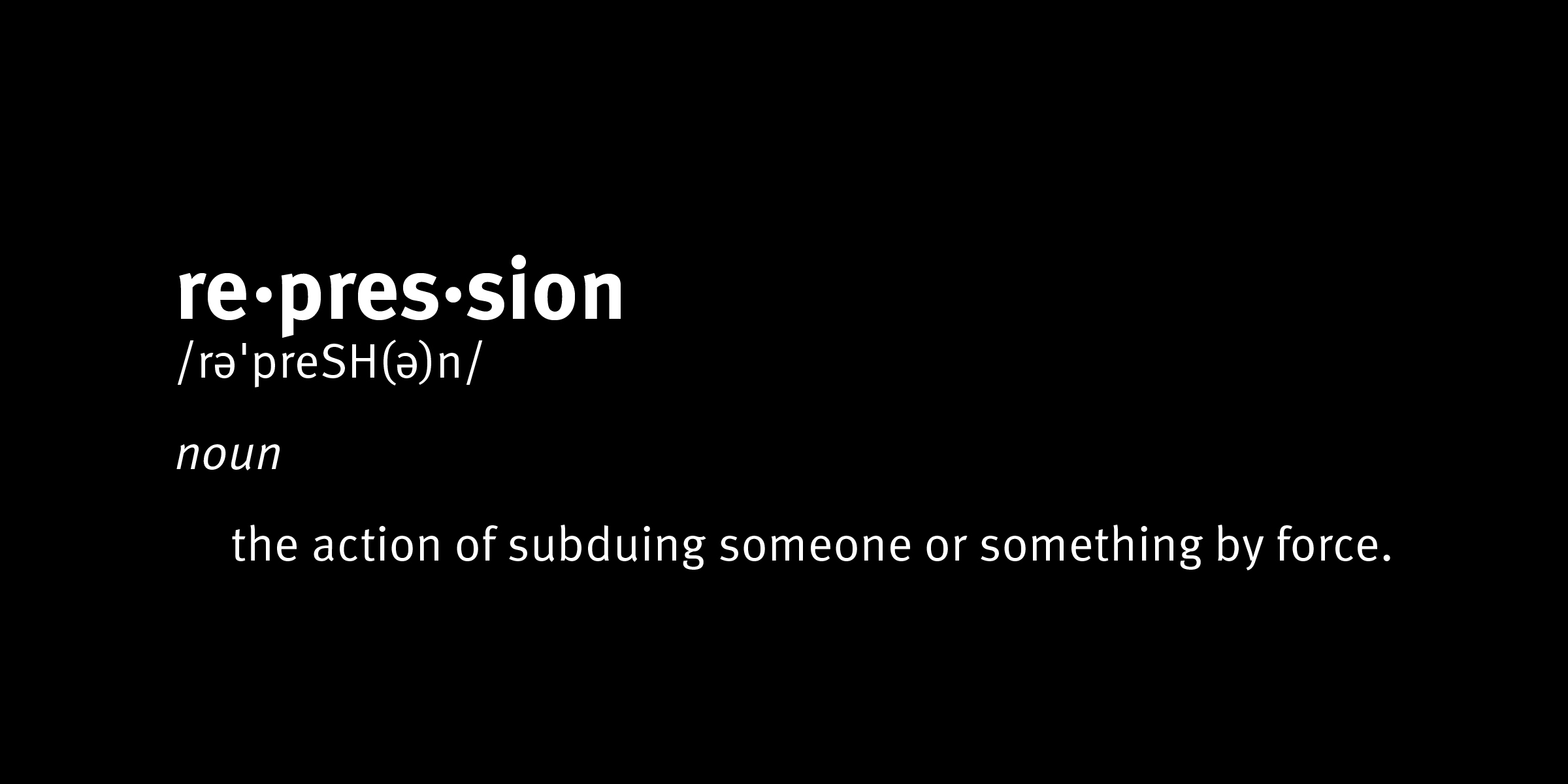
Introduction
China’s authorities place extraordinary emphasis on the importance of propaganda (xuanchuan)[1]in sustaining their rule. This phenomenon is particularly evident in Tibet, where there has been a long history of human rights violations, extreme hostility towards political rights, and heavy restrictions on the rights to freedom of expression and access to information.
The Glossary
The glossary below provides examples of the most frequent and disturbing tifa used in the official media in Tibet to refer to these new security policies. It includes approximate definitions by Human Rights Watch for these terms, although their meanings are rarely clear and have to be derived largely from the contexts in which they are found. There is frequent overlap between terms. The glossary also gives the standard Chinese and Tibetan versions of these terms, indicates their first known occurrence in the official media in their current sense, and gives examples of their usage in the media in Tibetan areas.
Policy Terms
Policies relating to security and political control since 2011 are grouped together under the umbrella term “stability maintenance” (Tibetan: brtan lhing srung skyong བརྟན་ལྷིང་སྲུང་སྐྱོང་། Chinese: weiwen 维稳), which refers to the security measures instituted across the country from 2007 onwards to counter unrest and dissent. Since around 2013, these policies have also often been grouped under a second umbrella term, “social management,” which also refers to measures designed to achieve “stability” but implies the inclusion of measures providing services to the population.
Social Management
Tibetan: spyi tshogs do dam སྤྱི་ཚོགས་དོ་དམ།
Chinese: shèhuì guǎnlǐ 社会管理
Definition: “Social management” refers to a system of policies, methods, institutions, and attitudes designed to prevent social unrest by improving government provision of social services while at the same time improving government capacity to suppress dissent. It refers particularly to improving the capacity of Party and government organizations both to deliver services and to eliminate dissent, especially in rural townships and villages. These services include poverty relief, employment, and skills training, the mediation of disputes and “social contradictions,” and management of the “floating” or (migrant) population. All branches of government are required to perform social management functions, including those in charge of workplace safety, food safety, emergency management, and so forth.
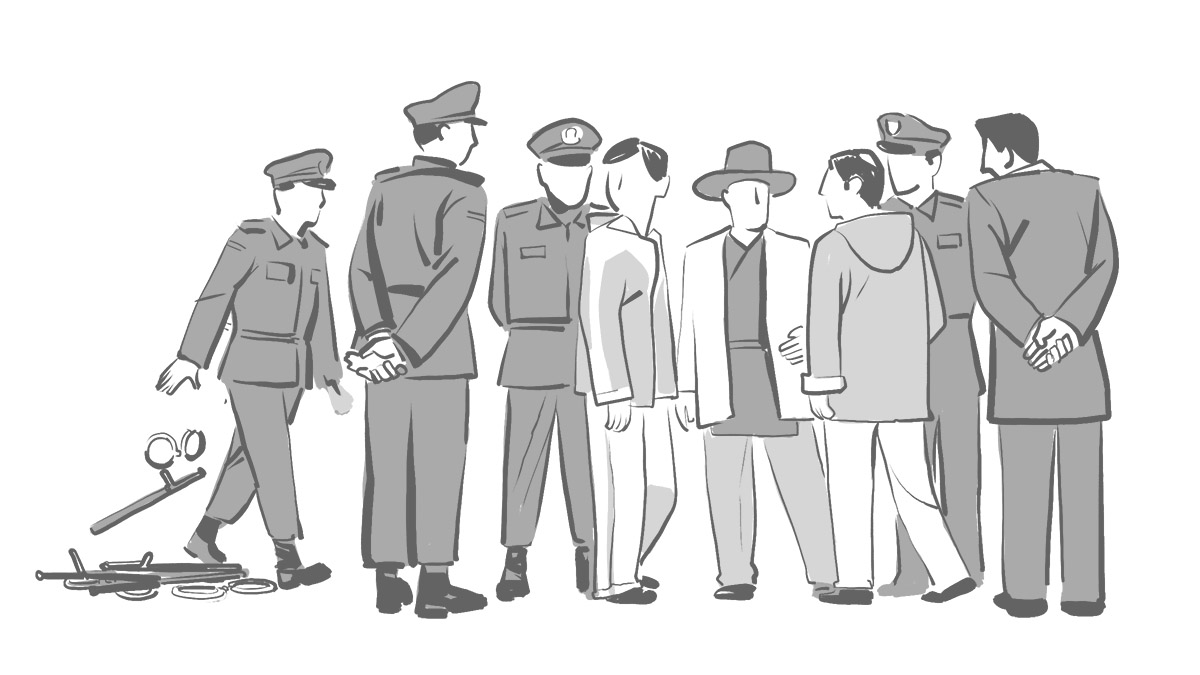
Social Rectification
Tibetan: spyi tshogs bcos skyongs སྤྱི་ཚོགས་བཅོས་སྐྱོངས།
Chinese: shèhuì zhìlǐ 社会治理
Definition: The Chinese term shehui zhili is normally translated into English as "social governance."[17] The term highlights the government’s role in providing services and welfare to citizens as well as controlling them, and its cooperation with other stakeholders in society such as nongovernmental organizations and social organizations.[18]
The Tibetan word bcos skyong, which is used to translate zhili, does not have this softer implication and means roughly “ongoing correction” or “rectification.” It refers to a set of policies for managing society and maintaining security that is marked by intensive, pro-active forms of surveillance and control of the population. These include setting up new types of monitoring organizations, carrying out propaganda exercises, containing social disputes, monitoring key figures, tracking migrants, and preemptively detaining people thought likely to commit crimes or criticize the government. The goal is to achieve “long-term stability” by eradicating all dissent. There are no effective means for those “rectified” to challenge that treatment. Just as “social management” did, “social rectification” insists that officials must identify criminals and dissidents before rather than after they commit a crime.
First appeared: in its current sense in official media in the TAR in 2012.
Example of usage:
· The use of religion to commit splittist crimes, the creation of rumors, and harming overall stability were resolutely smashed. During 2015, the TAR Procuracy issued arrest warrants for 1,368 suspect persons regionwide, and 1,530 persons were prosecuted. With increasing results from the innovation of social rectification, the number of warrants issued and of prosecutions has declined since 2012.[19]

Comprehensive Rectification (Chinese Equivalent: Comprehensive Management)
Tibetan: phyogs bsdus bcos skyong ཕྱོགས་བསྡུས་བཅོས་སྐྱོང་།
Chinese: zònghé zhìlǐ 综合治理
Definition: The Chinese term zonghe zhili is usually translated as “comprehensive management,” but, as with “social rectification,” the Tibetan equivalent has the stronger meaning of “ongoing correction,” and so we have rendered it as “comprehensive rectification.” It usually refers to police operations designed to impose or restore order in a community or locality. These operations include police raids, investigations, detentions, prosecutions, closures, or reeducation drives. They can be in response to a particular incident or situation, or because that locality is subject to routine attention in any case. The term is often used to describe stability maintenance work in general.
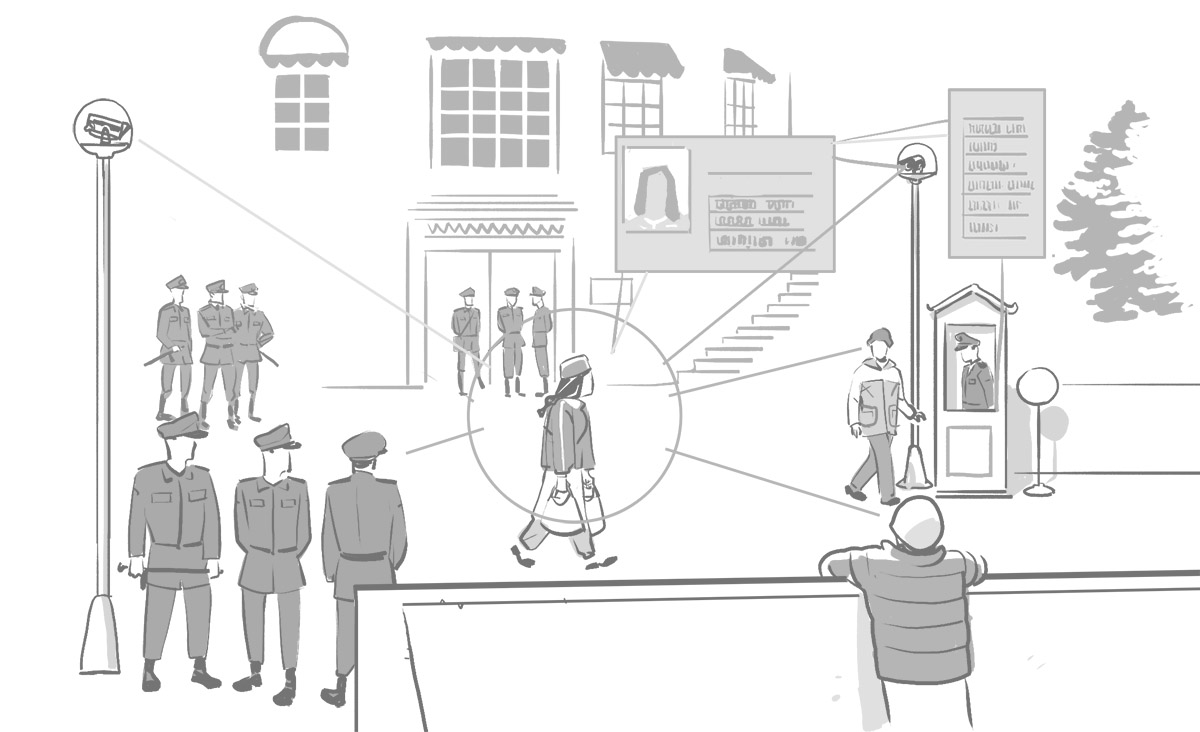
Preventive Control
Tibetan: sngon ’gog tshod ’dzin སྔོན་འགོག་ཚོད་འཛིན།
Chinese: shèhuì zhì'ān fángkòng 社会治安防控
Definition: The full form of this phrase is “preventive control of social stability.” It refers to the construction and development of policing networks to detect and deal with threats to stability before they lead to actual incidents. Usually refers to the grid management system (meaning offices established within each “grid unit” of a town or village) and to “public convenience police posts,” which were set up at road junctions in many Tibetan towns after 2011. It also includes organizing ordinary people to carry out security work by recruiting security teams and organizing citizen patrols in villages, neighborhoods, schools, and workplaces.
First appeared: in 2000 in several academic papers, although at least one paper from 2000 notes that there was no clear working definition. Frequently used in official media in the TAR since 2008.[22]
Example of usage:
· Continue to deepen the implementation of cadres stationed in
villages and monasteries, strengthen and innovate monastery management, urban
grid management, and ‘advanced double-linked households,’ [and] construct a
three-dimensional social preventive
control system, ensuring that Tibet’s society overall maintains harmony and
stability.[23]
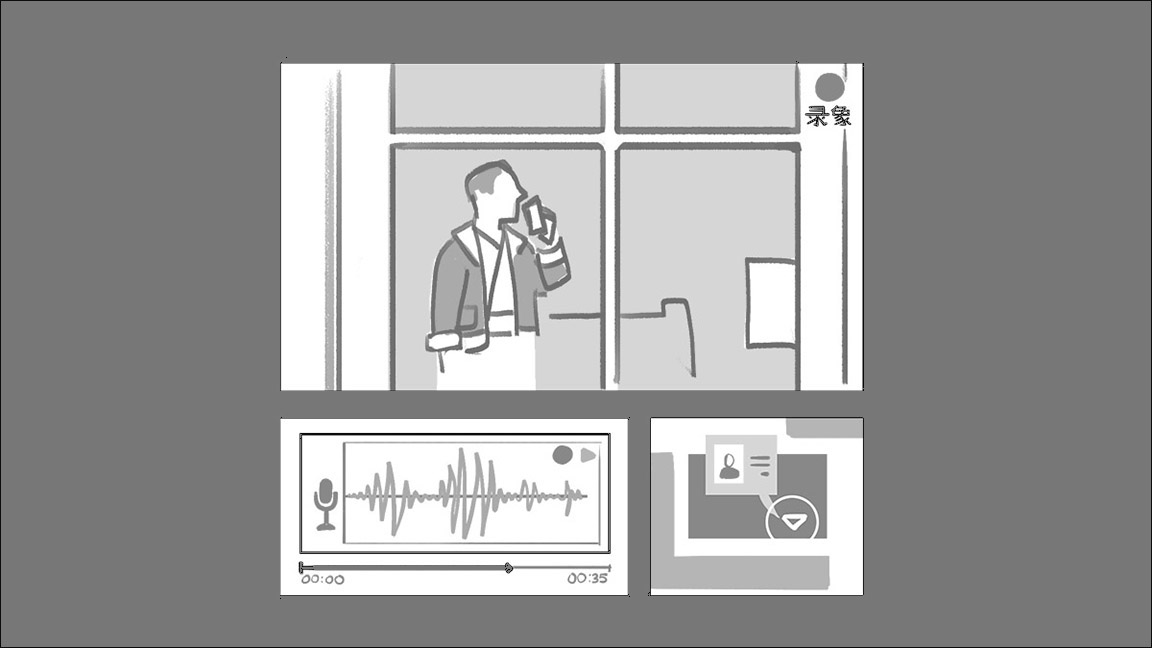
Three-dimensional [Social Stability] Preventive Control System
Tibetan: langs gzugs can gyi sngon ’gog tshod ’dzin ma lag ལངས་གཟུགས་ཅན་གྱི་སྔོན་འགོག་ཚོད་འཛིན་མ་ལག
Chinese: lìtǐ huà shèhuì zhì’ān fáng kòng tǐxì 立体化社会治安防控体系
Definition: Refers to a policing system or monitoring network that includes digital surveillance; monitoring at the grassroots level carried out by cadres based in monasteries, villages, and local neighborhoods; and policing done by officials in grid management offices and by appointed representatives in “double-linked household” units. The term emphasizes the integration of multiple information systems.
First appeared: in 2001 in the Journal of the Shanghai Public Security Academy, and regularly in academic and professional publications thereafter. It has been current in TAR official media since 2012. Gained additional currency after it was used by Xi Jinping in the national and Xinjiang contexts in 2014.
Example of usage:
- Strengthening stability defense and control networks and communication networks within offices, enterprises and units, (specific) localities and (general) jurisdictions, networks and society, personnel, equipment and skills must be combined in order to construct a three-dimensional defense and control system for social rectification combining punishment, defense and control.[24]
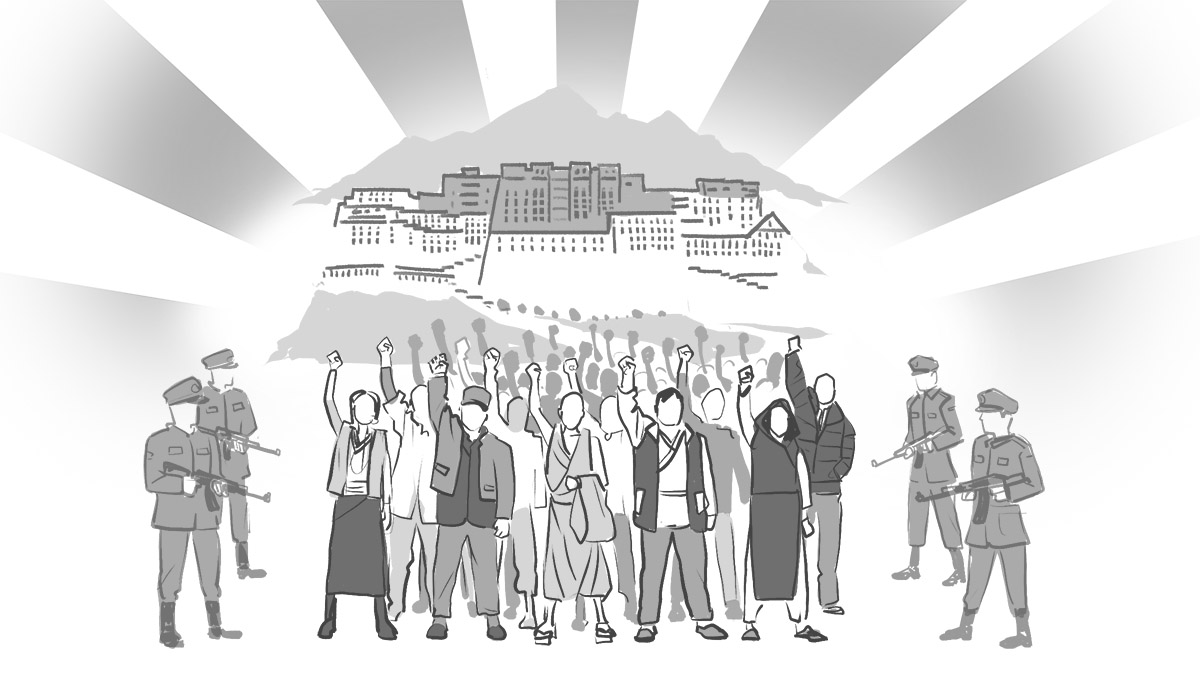
Long-term Stability
Tibetan: yun ring bde ’khod ཡུན་རིང་བདེ་འཁོད།
Chinese: chángzhì jiǔ'ān 长治久安
Definition: “Long-term stability” describes the ultimate objective of stability maintenance and social management policies. All the other security and control policies are supposed to lead to this outcome. It sounds like a term that any government might use: the hope for a society free from conflict, violence and unrest. But in the Tibetan case, it has a more precise and more sinister meaning: it refers to the creation of a society in which there is no dissent. According to Chinese political thinking, in Tibet this extreme form of “long-term stability” will be achieved by eradicating dissident ideas, which are seen as the root causes of instability, rather than just the symptoms.
Officials plan to achieve this by increasing grassroots work by officials - especially by quickly identifying and resolving any complaints or disputes among ordinary people, however minor. The plan also involves increasing ideological and propaganda work in schools, as well as in intellectual, cultural and religious spheres, and other areas of public life, in order to make sure that all citizens share the same aspirations. Officials also seek to obtain better information about local needs and expectations, so that the government can provide more efficient services to local communities.
First appeared: in TAR official media in the 2000s. The origin of the phrase lies in classical Chinese literature and is attributed to a scholar and historian called Jia Yi at the court of the Western Han Dynasty (206 BCE–9 CE). The overall goals of “Tibet work” during 2011-12 were referred to as “leap-style development and long-term stability,” while the goals since 2013 are described as “ongoing stability, long-term stability and comprehensive stability.”
Example of usage:
- To achieve long-term stability in Tibet and the Tibetan regions of the four provinces, we must be unrelenting and work over the long term, exploring long-term strategies.[25]
Implementation Terms

No Cracks, No Shadows, No Gaps Left
Tibetan: srubs kha | grib cha | stong cha bcas ma lus pa སྲུབས་ཁ། གྲིབ་ཆ། སྟོང་ཆ་མ་ལུས་པ།
Chinese: meiyou fèngxì, meiyou mángdiǎn hé meiyou kòngbái dian 没有缝子,没有盲点和没有空白点
Definition: The Chinese version of this slogan can be translated literally as “no cracks, no blind spots, no gaps unfilled.” It is an order or “guiding instruction” to police, Party officials, and others not to overlook or neglect even the most trivial location or aspect of a case when they are assessing, investigating or searching a village, home, monastery, or any other location. It instructs them to investigate a person even when there is only the slightest suspicion that they might pose a potential threat to “stability maintenance.” This instruction is repeated frequently to local officials in the TAR, ordering them to surveil all people who appear to present the slightest threat, no matter how minor or remote that threat might be.
The “cracks” are believed to be places where suspects might try to blend in with “the masses” invisibly, waiting for opportunities to cause unrest, or where they will hide in the hope of not being noticed. People hiding in “cracks” might be fugitives staying undetected in villages, and so forth, so officials are required to examine all such places without exception. The “shadows” are locations that cannot easily be seen even though the spaces on either side may be brightly lit and clearly distinguishable. People in the “shadows” might be local officials or apparently law-abiding citizens who harbor hidden separatist sympathies, and so forth. “No gaps” is probably a reference to investigating people who are associates of a suspect, not just those whose behavior is obviously suspicious. In stability maintenance operations, the term implies that a suspect’s associates should also be examined for their political views, regardless of whether they present an apparent threat or are suspicious.
First appeared: in TAR official media in 2011. This term is not used in the “social stability” context in mainland China.
Example of usage:
- Specify goals, focus pointedly on the six things to strictly prevent, leaving no shadows, no cracks and no blind spots, allowing no large, medium or small incidents to emerge, no self-immolations, no terrorist acts, no one causing disturbance, no one coming and going illegally across national borders.[26]
Variant usage: the phrase is also used in the sense of “leaving no traces,” or leaving no wounds or marks, meaning that people should not raise troubling or problematic issues. This refers to not allowing people to talk about difficult memories, such as the protests in Tibet in 1989 and 2008, because allowing them to do so might lead them to question the official narrative.
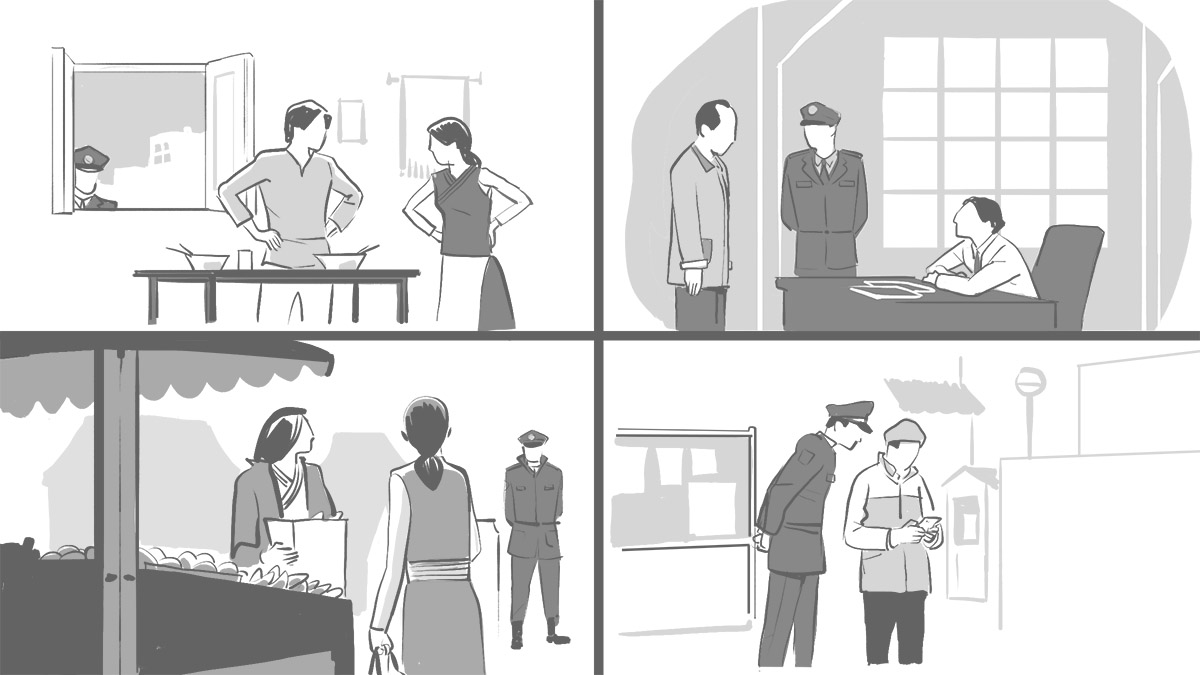
Eliminate Unseen Threats
Tibetan: mi mngon pa’i rkyen ngan med pa bzo ba མི་མངོན་པའི་རྐྱེན་ངན་མེད་པ་བཟོ་བ།
Chinese: xiāochú yǐnhuàn 消除隐患
Definition: An overarching instruction for all “stability maintenance” work, requiring personnel to take preemptive action against any potential cause of instability, even if it does not yet appear to be a threat.
This instruction refers to the belief among Chinese officials that even an apparently minor issue or complaint can trigger underlying disaffection among the general population and lead to serious protests against the state, especially in Tibet.
Examples include the imprisonment of schoolchildren for complaining about increased Chinese language use in their textbooks in Qinghai in 2010, as well as severe crackdowns by officials on protests by Tibetans about food prices, medical costs, mining on sacred mountains, water pollution by industries, and other issues. Official fears in Tibet about such “unseen threats” appear to have increased since 2008, when some Tibetans expressed concerns about the Beijing Olympic Games, and shortly afterward widespread protests erupted across the Tibetan plateau against Chinese rule. The renewal of political education in monasteries, the stationing of cadres in villages and monasteries, and the imposition of the grid management and the double-linked households systems in Tibetan areas all appear to be at least in part aimed at identifying and eliminating any future “unseen threats to stability.”
First appeared: in TAR official media in 2011.
Example of usage:
- Since 2011 units at all levels in the region have concentrated on ‘Three Struggles’ … thoroughly pursuing strike hard rectification and systematic investigation and rectification of critical localities to guarantee social stability with all their might by eliminating invisible threats and causes of instability, so that last year the public sense of security reached 97.57%.[27]
Variant usage: the phrase “unseen threats” is also used in public safety contexts, in references to such issues as epidemic prevention, traffic, fire prevention, and workplace safety.
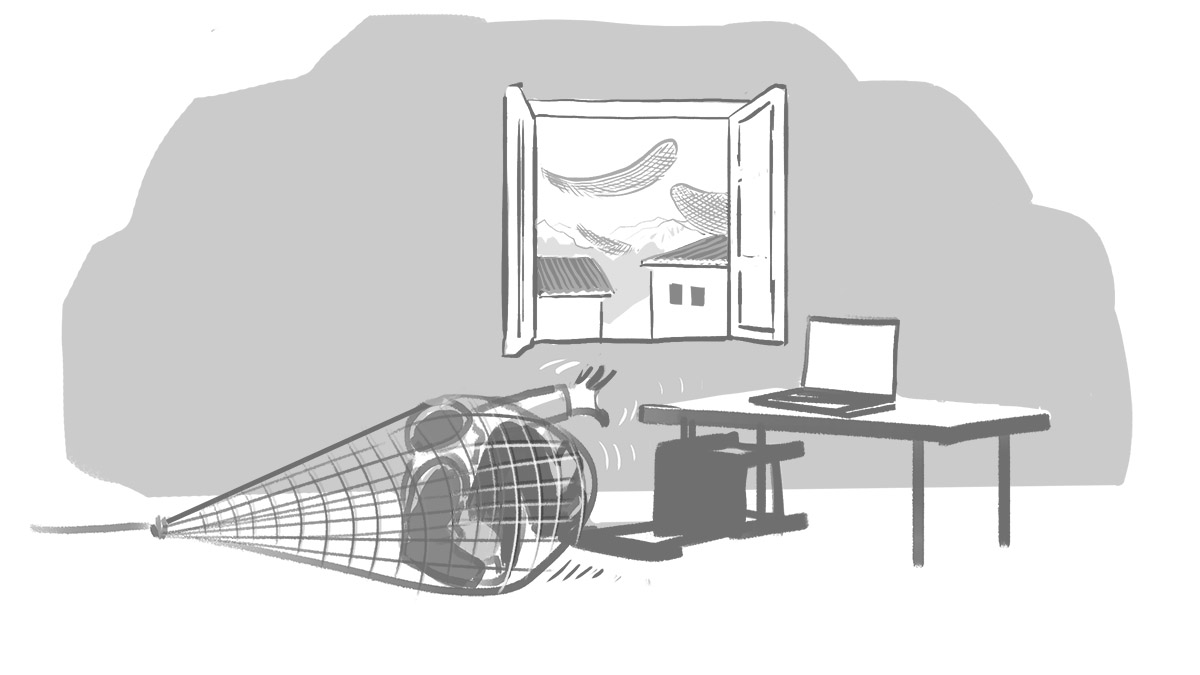
Nets in the Sky, Traps on the Ground
Tibetan: gnam rgya sa rnyi གནམ་རྒྱ་ས་རྙི།
Chinese: tiānluó dìwǎng 天罗地网
Definition: This term refers to the pervasive systems of control and surveillance deployed to track, identify and capture criminals, dissidents, and fugitives. In the current Tibet context, it appears to refer to blocking foreign media broadcasts into Tibet, controlling cyberspace, and stopping Tibetans fleeing into exile or visiting India, where the Dalai Lama and the exile Tibetan government are based.
First appeared: in a play by an anonymous author from the Yuan era (1261-1368), in which a character says “Celestialsoldiers, set up nets in the sky and traps on the ground, don't let demons slip away!” Revived in various forms in the Communist era, both before and since the establishment of the People’s Republic of China in 1949.
Example of usage:
- The key to upholding social harmony and stability is people. The autonomous regional Party committee and government have all along concentrated on integrating experts and people, vigorously implementing mass prevention and mass control, relying on the masses, mobilizing the masses, and fully bringing into play the roles of 'factory care teams, school care teams, village care teams,' and red arm-band teams, leading all areas of society to actively participate in constructing 'peace work units,' and further building nets in the sky, traps on the ground, and copper ramparts and iron walls for upholding social stability.[28]
Variant usage: the phrase “nets spread from the earth to
the sky” was used by Mao Zedong in his On
Protracted War in 1938 and revived by Xi Jinping in a speech on crushing
“terrorism” at the 2nd Xinjiang Work Conference in May 2014. The
term “Skynet” (tianwang) is used for China’s video surveillance system,
and for the drive by China’s Central Commission for Discipline
Inspection since April 2015 to repatriate high-profile corruption suspects.[29]
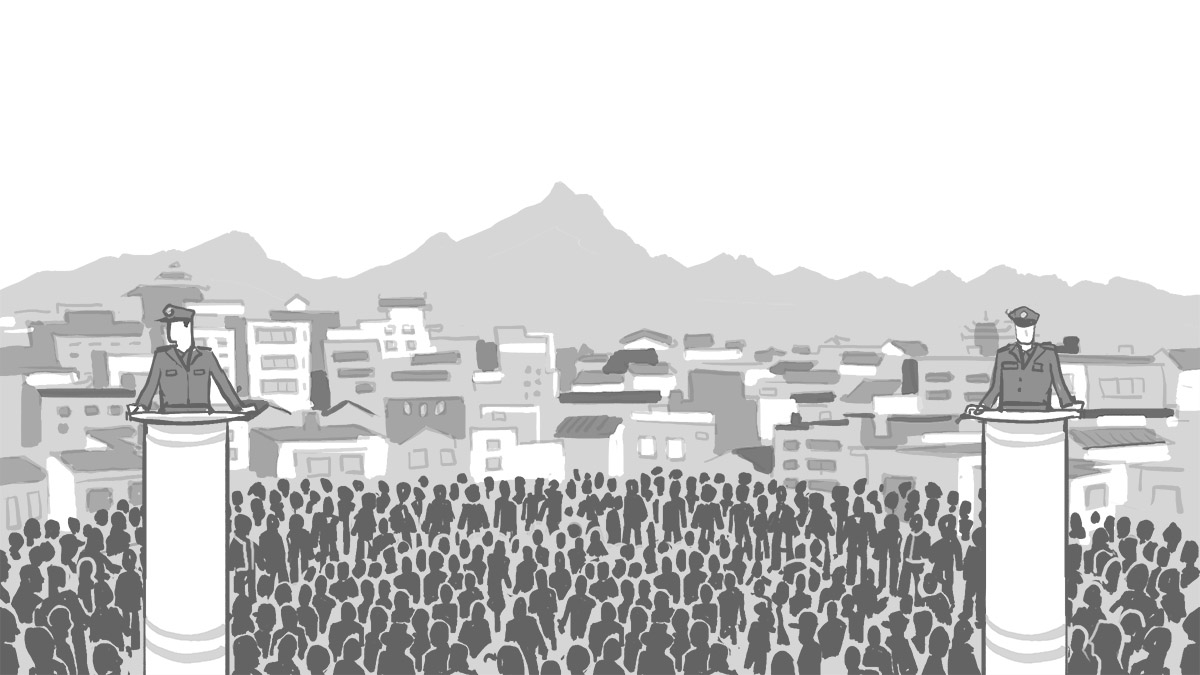
Copper Ramparts, Iron Walls
Tibetan: zangs gyang lcags rtsigs ཟངས་གྱང་ལྕགས་རྩིགས།
Chinese: tóngqiáng tiěbì 铜墙铁壁
Definition: The term refers to an impenetrable “public security defense network” (zhi’an lianfang wangluo) consisting of citizen patrols, border security posts, police checkposts, surveillance systems, internet controls, identity card monitoring, travel restrictions, management of “focus personnel,” grid unit offices, informant networks, and other mechanisms that aim to control or monitor movement of people and ideas into, out of, or within a region or society. It describes the ideal of “stability maintenance” work, where authorities have successfully sealed off a region or society from people or ideas they regard as threatening or problematic.
First appeared: in a play from the Yuan era by an anonymous author, in which a character says, “Even if it is a wall of copper and iron, don't fear that it can't be torn down.” It also appears in the 16th century literary classic, The Water Margin.
Example of usage:
- In order to strengthen the border areas, consolidate the border areas, make the border areas prosper, and enrich the people, firmly grasp the keys of thriving development and stability maintenance in border consolidation. [Do this by] focusing on the eight types of effort for helping the border areas, [which are:] strengthening the border areas, making the border areas prosper, enlivening the border areas, benefiting the border areas, greening the border areas, stabilizing the border areas, and consolidating the border areas, [and] constructing impregnable ‘copper ramparts and iron walls’ at the border crossings.[30]
Variant usage: used in mainland China as a proverbial image for strong military defenses and for secure systems like online payment services.
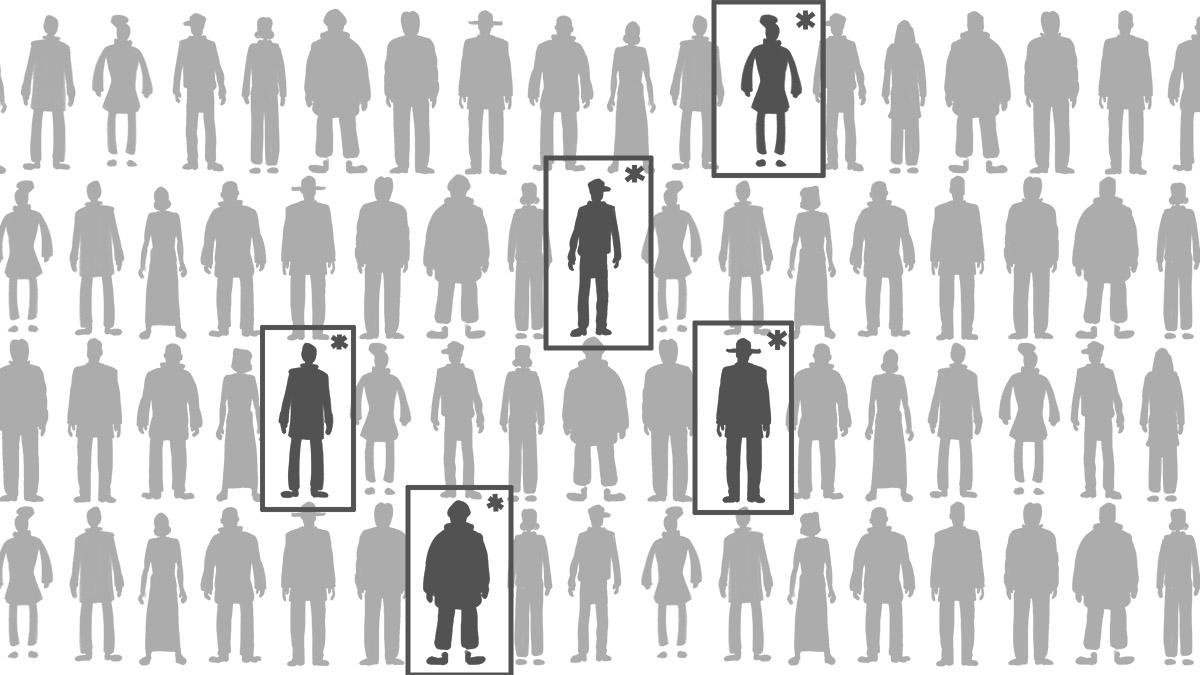
Key Persons
Tibetan: gtso gnad mi sna གཙོ་གནད་མི་སྣ།
Chinese: zhòngdiǎn rényuán kòngzhì 重点人员
Definition: The full version of this phrase in Chinese means “important persons to be controlled,” while the Tibetan version uses a shorter form meaning “focus personnel” or “key individuals.” This refers to individuals deemed to pose a potential threat to society, so that officials and police should monitor or “control” their movements and behavior especially closely; similar to profiling. A 2012 list of these “focus personnel” or “special categories of people” in Tibet included, (1) those released from detention; (2) those returning from abroad (huiliu renyuan), such as Tibetans who have been unofficially to India; (3) “mobile” monks and nuns, meaning those who are not officially affiliated to and residing in a monastery; (4) people who were monks or nuns in the past but have been expelled from a monastery; (5) people suspected of involvement in the protests of March 2008; and (6) “other individuals who require special attention.”[31]
Since at least 2014, a number of local government websites in the TAR have alluded to “11 types and 59 kinds of key persons” whom officials have to monitor in order to ensure “that none escape management.”[32] The full list of these categories is not known, but they include former prisoners, people who have undergone “community correction,” “idle youth,” and “dangerous” people who have attended “Kalachakra” teachings by the Dalai Lama in India. Officials were required to “pay periodic visits” to these individuals, to “strengthen their ideology and grasp their thinking in a timely way.” [33]
This term also applies to individuals considered to have even minor influence on their local or professional community if their thoughts or actions are seen as threatening the maintenance of stability. These people are monitored, subjected to frequent interviewing and reeducation by local officials, and face restrictions on their movements. They are of particular concern to authorities during sensitive periods, such as major holidays and anniversaries, or during visits by senior leaders.
First appeared: in central government usage in 2009; in TAR official media in 2012. Note that this is a new term for an old practice.
Example of usage:
- Keep a strict lookout for all kinds of splittist and harmful activities, ensure strict control of social dynamics, comprehensively implement such work measures as contradiction and dispute amelioration, control of key persons and patrols of key areas in order to eliminate to the greatest extent non-secure factors during the festivals, ensuring that the entire county enjoys peaceful, comfortable, safe, and civilized festivals.[34]
Variant usage: A detailed document in Zhejiang province in March 2010 listed “7 categories of key persons” with whom the security services have to carry out “dynamic control work” (dongtai guankong gongzuo). The seven types are: “persons involved in terrorism, persons involved in stability, persons involved with drugs, fugitive persons [zaitiao renyuan], persons previously convicted of major crimes, trouble-making mentally ill persons, and petitioners.”[35] The main focus of the document is on procedures for tracking the movements of drug users, part of what is now a nation-wide “drug user dynamic management control system” (xidurenyuan dongtaiguanli jizhi).[36]The document lists members of the Falungong and other “cult” organizations, along with supporters of independence for Xinjiang, Tibet or Taiwan, as the most serious category of “key persons,” meaning those who are “involved in terrorism” or who threaten national security. It describes 45 regulations governing procedures to be followed in carrying out “dynamic control work” with these “key persons”, all of which are to be kept secret. A similar document was issued in Shanghai in June 2010 which also listed detailed procedures for “control work” with “key persons.”[37] These documents are the earliest ones known to systematically describe the “key persons” monitoring system. Usage of the term to describe suspected political dissidents is far more prevalent in Tibet than in China as a whole.

Management and Service of the Floating Population
Tibetan: phyogs mi’i zhabs zhu dang do dam ཕྱོགས་མིའི་ཞབས་ཞུ་དང་དོ་དམ།
Chinese: liúdòng rénkǒu fúwù guǎnlǐ 流动人口服务管理
Definition: The system by which authorities track, administer, and provide services to people who are not registered residents of the area where they are living. Authorities in China provide full services only to people residing in the city, town, or rural area where they are registered, which is usually the place where they were born.; This location is listed in their “household registration” (hukou) document.
The floating population management system monitor and in some cases provide services to people living in an area where they are not registered. In Tibet, many or most of the floating population are mainland Chinese who have moved into Tibetan areas, who may need assistance with access to medical care, schooling, and other services normally requiring hukou registration. Others are Tibetans living in a town or area in Tibet where they are not registered. Since they fall outside the oversight and control system in their registered home area, they are seen as a “special group” that needs additional monitoring and surveillance.
First appeared: in TAR official media in 2008. The “service” component of floating population management was added under the policy known as “building a well-off society in an all-round way” from the mid-2000s onward.
Example of usage:
- Laws and regulations on management and service of the floating population guarantee the functioning of the system of controlling people by occupation, controlling people by residence, and controlling people by ID documents.[38]

Every Village a Fortress, Everyone a Watchman
Tibetan: grong tsho tshang ma mkhar rdzong dang mi tshang ma so dmag གྲོང་ཚོ་ཚང་མ་མཁར་རྫོང་དང་མི་ཚང་མ་སོ་དམག
Chinese: cūn cūn chéng bǎolěi, rén rén zuò shǒuwàng 村村成堡垒,人人做守望
Definition: Requiring every community and every resident in Tibet to be active participants in “stability maintenance” work, meaning that all residents must report any threats to stability, such as the arrival of outsiders or expressions of dissent, and must participate actively in security operations. These operations include “voluntary defense teams,” “patrol teams,” and other security measures in villages, local communities, workplaces, and schools. Participation is unlikely to be optional. The phrase also describes the ideal “stability maintenance” condition, where every community is so well policed by the residents that no disturbing ideas or people can enter it undetected.
First appeared: in its present form in TAR official media in 2012. Found, for example, in relation to security vigilance on the Yunnan/Burma border (2010), but rarely used other than in Tibet.
Example of usage:
- Nowadays, with keen support from Party, government and related departments, there is social stability maintenance communication between the five levels of county, township, village, sub-committee, and household. [...] Also, during the festival +3 period at the end of the year and beginning of the new year, there are organized grassroots social stability maintenance communication forces such as village defense teams (grong srung ru khag), school defense teams (slob srung ru khag) and patrol teams (skor g.yengs ru khag)... so that every village has become a fortress and everyone is a watchman.[39]

Fixing Root and Branch Together
Tibetan: rtsa lag mnyam bcos རྩ་ལག་མཉམ་བཅོས།
Chinese: biāoběn jiānzhì 标本兼治
Definition: An approach to eradicating dissent that includes changing people’s political views at the most fundamental level and thus eliminating the root causes of dissent. In Tibet, authorities see the influence of the Dalai Lama and his supporters as the “root cause” of dissent, and the “branches” are people susceptible to that influence. Without removing the root cause, punishing and imprisoning the “branches” will not deliver comprehensive success or bring long-term stability.
First appeared: in TAR official media in 2008.
Variant usage: Occurs in Chinese media in a variety of managerial contexts as an approach to problem-solving.
Example of usage:
- Govern Tibet according to law, enrich the people and revive Tibet, construct Tibet over the long term, rally the people's hearts and lay a solid foundation for the important principles of Tibet work, but it all boils down to stabilizing Tibet and pacifying the people, and enriching the people and reviving Tibet. To carry out Tibet work well in the new era, we must uphold the authority of the Constitution and laws, and uphold that everyone is equal before the law; we must continue to promote the welfare of the masses of all nationalities, and promote the common enjoyment by all people of the fruits of reform and development; we must adhere to prudent policies for steady advance, and have a long-term perspective on all work; we must combine material and spiritual forces, and rally the people's hearts to the greatest possible extent; we must adhere to fixing root and branch together, with a focus on the root, and build strong grassroots organizations and do practical foundation work.[40]
[1] Foreign terms are in Chinese unless stated otherwise.
[2] For general discussion of propaganda in China, see David Shambaugh, "China's Propaganda System: Institutions, Processes and Efficacy," China Journal, vol. 57 (2007), pp. 25–58; Anne-Marie Brady, Marketing Dictatorship: Propaganda and Thought Work in Contemporary China (Lanham: Rowman & Littlefield, 2008).
[3] Human Rights Watch, “Stability Maintenance,” Section 1, Relentless: Detention and Prosecution of Tibetans Under China’s “Stability Maintenance” Campaign (New York: Human Rights Watch, May 22, 2016), https://www.hrw.org/report/2016/05/22/relentless/detention-and-prosecution-tibetans-under-chinas-stability-maintenance.
[4] Wei Shan, “Social Management: China Goes Beyond Maintaining Social Stability,” East Asian Policy 5 (2013): 36, DOI: 10.1142/S1793930513000147.
[5] “China: End Crackdown on Tibetan Monasteries,” Human Rights Watch news release, October 12, 2012, https://www.hrw.org/news/2011/10/12/china-end-crackdown-tibetan-monasteries.
[6] Human Rights Watch, China—Relentless: Detention and Prosecution of Tibetans under China’s “Stability Maintenance” Campaign, May 22, 2016, https://www.hrw.org/report/2016/05/22/relentless/detention-and-prosecution-tibetans-under-chinas-stability-maintenance. See also the example of Chulen county in Qinghai under “Preventive Control”, below.
[7] “China: Tibetan Monasteries Placed Under Direct Rule,” Human Rights Watch news release, March 16, 2012, http://www.hrw.org/news/2012/03/16/china-tibetan-monasteries-placed-under-direct-rule.
[8] “China: ‘Benefit the Masses’ Campaign Surveilling Tibetans,” Human Rights Watch news release, June 18, 2013, https://www.hrw.org/news/2013/06/18/china-benefit-masses-campaign-surveilling-tibetans; “China: No End to Tibet Surveillance Program: 21,000 Officials Stationed Indefinitely in Villages,” Human Rights Watch news release, January 18, 2016, https://www.hrw.org/news/2016/01/18/china-no-end-tibet-surveillance-program.
[9] “China: Alarming New Surveillance, Security in Tibet,” Human Rights Watch news release, March 20, 2013, https://www.hrw.org/news/2013/03/20/china-alarming-new-surveillance-security-tibet.
[10] “China: Alarming New Surveillance, Security in Tibet,” Human Rights Watch news release, March 20, 2013.
[11] For the study of such terms in China as a whole, note the important initiatives taken by the China Media Project’s Media Dictionary (http://cmp.hku.hk/~/media-dictionary/), publications by Duihua (http://duihuahrjournal.org/), and Gucheng Li, A Glossary of Political Terms of the People's Republic of China, Chinese University Press, Hong Kong, 1995.
[12] See for example Zengke He, “From social management to social governance: discourse change and policy adjustment,” Journal of Chinese Governance (2015), 1:1, 99-118 and Wang, Zhoujun. “Hexie shehui yu goujian fuwu xing zhengfu (Harmonious society and the construction of a service-oriented government),” in Zhongguo xingzheng guanli (2008), 1, 30-32.
[13] TAR Government Annual Work Report, China Tibet News Online, “Point 5: Strengthening and innovating social management to create a more stable and harmonious era,” February 8, 2013, http://tb.chinatibetnews.com/zhengfuzx/201302/08/content_1173506_9.html.
[14] “TAR Prefectures and Departments Study the 7th Session of the 8th Regional Party Congress,”
China Tibet News Online, October 1, 2015, http://tb.chinatibetnews.com/zw/zwxw/201510/t20151001_844462.html.
[15] Simona Novaretti, “Social Governance vs. Social Management: Towards a New Regulatory Role for Social Organizations in China?” Comparative and Transnational Law 11 (Centro di Diritto Comparato e Transizionale Working Paper 32-2014), www.cdct.it/workingpapers.
[16] “Grassroots Party organization building must be strengthened on the basis of ‘grids’,” Tibet Daily commentary, January 15, 2016, http://tb.chinatibetnews.com/xw/xwpl/201601/t20160115_1036046.html.
[17] The use of shehui zhili to mean “social governance” rather than “social management” has often been indicated in official documents since around 2011 by adding the word “innovative” (chuangxin, Tibetan: gsar dod pa). Before 2011, the term shehui zhili had usually been translated as “social management” or “social administration.”
[18] Wang Chunyan, “Shehui zhili yu shehui guanli yousan da qubie” (Social governance and social management have three major differences), see China Social Science News, March 21, 2014, http://www.cssn.cn/shx/shx_xsdt/201403/t20140321_1038984.shtml.
[19] “TAR Procuracy Work Report, Delivered to the Tibetan People’s Congress on January 29 by Chief Procurator Zhang Peizhong,” China Tibet News Online, March 2, 2016, http://tb.chinatibetnews.com/sylm/syyw/201603/t20160302_1096715.html.
[20] “Zhonggong zhongyang, guowuyuan guanyu jiaqiang shehui zhi’an zonghe zhili de jueding” (CCP Central Committee, State Council Decision Regarding Strengthening the Comprehensive Management of Public Security), February 2 1991, http://www.alt.gov.cn/Article/ShowArticle.aspx?ArticleID=38470. See also “Zonghe zhili” (Comprehesnive Management), Baidu Baike web-encyclopaedia, n.d., baike.baidu.com/view/2269872.htm; Carl Minzner and Wang Yuhua, “Rise of the Chinese Security State,” China Quarterly, 2015, http://ir.lawnet.fordham.edu/faculty_scholarship/591.
[21] “Zhang Gongrong Inspects Stability Maintenance in Huangnan Prefecture, [Qinghai],” Qinghai Tibetan Broadcasting, December 25, 2015, http://ti.tibet3.com/news/tibet/qh/2015-12/25/content_553674.htm.
[22] Huang Ming, “Rational Thinking on Constructing the System of Preventing and Controlling Public Security,” Jiangsu Public Security College, April 2000, http://www.cnki.com.cn/Article/CJFDTotal-GAZK200004000.htm.
[23] “Chen Quanguo’s Five Years of Ruling Tibet: Social Stability, Fastest Rate of Economic Growth,” Phoenix News, August 29, 2016, http://news.ifeng.com/a/20160829/49857646_0.shtml.
[24] “TAR Party Standing Committee Holds Meeting to Communicate and Study the Spirit of Xi Jinping’s Important Instructions on Social Stability Work and of the National Meeting on Establishing Social Stability Defense and Control Systems,” China Tibet News Online, October 1, 2015, http://tb.xzxw.com/zw/zwxw/201510/t20151001_844444.html.
[25] “Innovate Social Governance and Ensure Tibet’s Long-Term Stability,” People’s Daily, August 22, 2016, http://xz.people.com.cn/n2/2016/0822/c138901-28871593.html.
[26] “Deng Xiaogang Chairs TAR MSS Command Teleconference,” China Tibet News Online, March 15, 2016, http://tb.chinatibetnews.com/fz/fzxw/201603/t20160315_1123148.html.
[27] “A New Chapter of Harmonious Stability: Stability is the Precondition for Social Development, Without Stability Nothing Else Can Be Discussed,” commentary, Tibet Legal Newspaper, November 20, 2012, http://tb.chinatibetnews.com/news/2012-11/20/content_1110117.htm.
[28] “Innovate Social Governance to Ensure the Long-Term Stability of Tibet,” Tibet Daily, August 22, 2016, http://xz.people.com.cn/n2/2016/0822/c138901-28871593.html.
[29] Li Yanhui, “Eyes in Sky Will Net Crooks,” Global Times, September 22, 2011,
http://www.globaltimes.cn/content/676378.shtml.
[30] “Our Region to Construct Strong ‘Copper Ramparts and Iron Walls’ in Order to Make the Border Areas Prosper and to Enrich the People,” Tibet Daily, September 6, 2016, http://old.chinatibetnews.com/xzrb/html/2016-09/06/content_720006.htm.
[31] This list is taken from a public notice posted outside a “grid unit” office in the Peling area of Lhasa in July 2012. The list was headed “Basic Grid Unit Information” and included drug addicts and Falungong practitioners as “key persons.”
[32] “Renbu County Stability Maintenance Supervision Group carries out stability maintenance supervision and inspection (仁布县维稳督导组进行维稳督导检查),” Renbu County Party Committee Propaganda Department, September 16, 2015, http://www.xzrb.gov.cn/pacg_3945/201509/t20150916_815381.html.
[33] See for example “Lazi [Lhatse] County carries out “Advance Double-Linked Households” innovative construction appraisals work (拉孜县开展“先进双联户”创建评选工作),” Lazi County [TAR] Internet Information Office, August 23, 2016, http://www.xzlaz.gov.cn/cgyw_3872/201608/t20160823_1399363.html and “Focus on the key, strengthen “double-linked households” work (突出重点 狠抓关键 强化“双联户”工作),” Dingri County [TAR] Government, August 12, 2014,
http://drx.gov.cn/ShowArticle.asp?ArticleID=61.
[34] “The Chaya [Drayab] County Public Security Bureau’s Stability Maintenance Work During the Two Festivals,” Chaya County Internet Information Office, [Chamdo, TAR], February 21, 2016, http://www.xzcya.gov.cn/cgyw_2154/201602/t20160221_1080816.html.
[35] “Zhejiang Province Public Security organs key personnel dynamic control work norms(Trial) [浙江省公安机关重点人员动态管控工作规范 (试行)],” Zhejiang Province Anti-Narcotics Team, March 2, 2010, http://chinadigitaltimes.net/chinese/2010/12//浙江省公安机关重点人员动态管控工作规范-试行/ and chinaaidsmuseum.blogspot.com/2010/11/china-aids5948.html.
[36] See Nicholas Bartlett, "Idling in Mao’s Shadow: Heroin Addiction and the Contested Therapeutic Value of Socialist Traditions of Laboring," Culture, Medicine, and Psychiatry (2016): 1-20, n9.
[37] The Shanghai document again lists Falungong practitioners and supporters of independence for Tibet, Xinjiang or Taiwan as the most critical targets for monitoring, but focuses on cult members, petitioners, the mentally ill and violent sexual offenders, who are classified among the minor types of “key persons.” See “Shanghai World Expo key personnel control work program [上海世博会重点人员管控工作方案],” http://chinadigitaltimes.net/chinese/2011/02/上海世博会重点人员管控工作方案/. The original was reportedly posted at ttp://www.zjjwly.gov.cn/zjjwly/deptonline/gaj/bmwj/20100628022136.html, but has since been removed; the link indicates a posting date of 28 June 2010.
[38] “By Innovating Social Rectification, Long Term Stability for Tibet Must be Assured: The Center’s Stability Maintenance Policy and Theory Implemented in Tibet in a Result-Oriented Way,” A Tibet Daily retrospective, Tibet Daily, August 24, 2016, http://tb.chinatibetnews.com/zw/zwxw/201608/t20160824_1400211.html.
[39] “The Harmonious Sound of a Prosperous Tibet,” China Tibet News Online, August 9, 2015, http://tb.xzxw.com/sylm/201508/t20150809_742657.html.
[40] “The Party Central Committee with
Comrade Xi Jinping as General Secretary Successfully Implements in Tibet the
Important Strategic Thinking of Border Governance and Stability in Tibet,” Tibet
Daily, July 12, 2016,
http://cpc.people.com.cn/n1/2016/0712/c64387-28547570.html.
